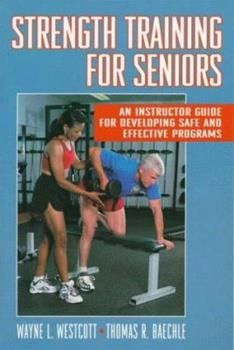
Strength Training for Seniors: Staying Strong as You Age
admin
- 0
As we age, maintaining strength and vitality becomes increasingly important. Strength training is an excellent way for seniors to stay fit and combat age-related muscle loss. Contrary to common misconceptions, strength training is not just for the young and athletic. It can be modified to suit the needs and abilities of seniors, offering numerous physical and mental benefits.
The Importance of Strength Training for Seniors
Strength training, also known as resistance or weight training, involves using resistance to build strength, endurance, and muscle mass. For seniors, engaging in regular strength training can provide a multitude of benefits:
Improved Bone Health: Strength training helps slow down age-related bone density loss and reduces the risk of osteoporosis, promoting overall bone health.
Enhanced Balance and Stability: Strengthening the muscles enhances balance and stability, reducing the risk of falls and related injuries, which can be especially important for older adults.
Increased Muscle Strength: Building muscle strength helps with everyday tasks, such as carrying groceries or climbing stairs, leading to greater independence and improved functionality in daily life.
Boosted Metabolism: As we age, our metabolism tends to slow down. Strength training helps stimulate metabolism, making it easier to maintain a healthy weight and manage body composition.
Chronic Disease Management: Regular resistance training has been shown to help manage chronic conditions such as arthritis, diabetes, and heart disease by improving muscle strength and overall fitness.
Improved Mental Health: Engaging in regular exercise, including strength training, can help combat symptoms of depression and anxiety, improve cognitive function, and enhance overall well-being.
Getting Started with Strength Training
Before starting any exercise regimen, it’s crucial to consult with a healthcare professional, especially if you have any existing health conditions or concerns. Once you have the green light, follow these steps to get started with strength training:
1. Set Clear Goals
Begin by setting clear and achievable goals. Whether you want to improve overall strength, increase muscle mass, or simply maintain independence in daily activities, defining your goals will help structure your training program.
2. Choose the Right Exercises
Select exercises that target major muscle groups such as the legs, arms, back, and core. Focus on exercises that are low-impact and suited for your fitness level. Examples include squats, lunges, bicep curls, and shoulder presses. Incorporating balance exercises such as standing on one leg can also help improve stability.
3. Start Slowly and Progress Gradually
Start with light weights or resistance bands to avoid straining your muscles. Begin with a set of 8-12 repetitions for each exercise, and gradually increase the weight or resistance as your strength improves. It’s essential to allow your body time to adapt and recover between workouts.
4. Focus on Form and Technique
Ensure you practice proper form and technique for each exercise to maximize the benefits and minimize the risk of injury. Consider working with a qualified trainer or joining a strength training class designed for seniors to receive guidance and support.
5. Incorporate Rest Days
Rest days are vital for muscle recovery and growth. Aim for at least 48 hours of rest between strength training sessions to give your body ample time to repair and strengthen.
6. Listen to Your Body
Pay attention to your body’s signals during strength training. If something feels painful or uncomfortable, adjust the intensity or seek guidance from a professional. It’s important to find the balance between challenging yourself and avoiding overexertion.
Conclusion
Strength training is a valuable tool for seniors to maintain strength, independence, and overall well-being as they age. Through regular resistance training, older adults can improve bone health, balance, muscle strength, metabolism, and mental health, as well as manage chronic conditions. By following a structured program, with clear goals and appropriate exercises, seniors can improve their quality of life and enjoy the benefits of staying strong as they age.

